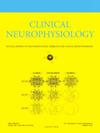Diagnosis of carpal tunnel syndrome using deep learning with comparative guidance
IF 3.7
3区 医学
Q1 CLINICAL NEUROLOGY
引用次数: 0
Abstract
Objective
This study aims to develop a deep learning model for a robust diagnosis of Carpal Tunnel Syndrome (CTS) based on comparative classification leveraging the ultrasound images of the thenar and hypothenar muscles.
Methods
We recruited 152 participants, both patients with varying severities of CTS and healthy individuals. The enrolled patients underwent ultrasonography, which provided ultrasound image data of the thenar and hypothenar muscles from the median and ulnar nerves. These images were used to train a deep learning model. We compared the performance of our model with previous comparative methods using echo intensity ratio or machine learning, and non-comparative methods based on deep learning. During the training process, comparative guidance based on cosine similarity was used so that the model learns to automatically identify the abnormal differences in echotexture between the ultrasound images of the thenar and hypothenar muscles.
Results
The proposed deep learning model with comparative guidance showed the highest performance. The comparison of Receiver operating characteristic (ROC) curves between models demonstrated that the Comparative guidance was effective in autonomously identifying complex features within the CTS dataset.
Conclusions
The proposed deep learning model with comparative guidance was shown to be effective in automatically identifying important features for CTS diagnosis from the ultrasound images. The proposed comparative approach was found to be robust to the traditional problems in ultrasound image analysis such as different cut-off values and anatomical variation of patients.
Significance
Proposed deep learning methodology facilitates accurate and efficient diagnosis of CTS from ultrasound images.
比较指导下深度学习诊断腕管综合征
目的:利用大鱼际和下鱼际肌肉的超声图像,建立一种基于比较分类的腕管综合征(CTS)深度学习模型。方法我们招募了152名参与者,包括不同严重程度的CTS患者和健康个体。纳入的患者接受超声检查,提供来自正中神经和尺神经的大鱼际和鱼际下肌肉的超声图像数据。这些图像被用来训练一个深度学习模型。我们将模型的性能与之前使用回声强度比或机器学习的比较方法以及基于深度学习的非比较方法进行了比较。在训练过程中,采用基于余弦相似度的比较指导,使模型学会自动识别大鱼际和下鱼际肌肉超声图像回声纹理的异常差异。结果采用比较指导的深度学习模型表现出最高的学习性能。模型间受试者工作特征(Receiver operating characteristic, ROC)曲线的比较结果表明,该方法能够有效地自主识别CTS数据集中的复杂特征。结论基于比较指导的深度学习模型能够有效地从超声图像中自动识别出CTS诊断的重要特征。结果表明,所提出的比较方法对超声图像分析中存在的截止值不同、患者解剖结构差异等传统问题具有较强的鲁棒性。提出的深度学习方法有助于从超声图像中准确有效地诊断CTS。
本文章由计算机程序翻译,如有差异,请以英文原文为准。
求助全文
约1分钟内获得全文
求助全文
来源期刊

Clinical Neurophysiology
医学-临床神经学
CiteScore
8.70
自引率
6.40%
发文量
932
审稿时长
59 days
期刊介绍:
As of January 1999, The journal Electroencephalography and Clinical Neurophysiology, and its two sections Electromyography and Motor Control and Evoked Potentials have amalgamated to become this journal - Clinical Neurophysiology.
Clinical Neurophysiology is the official journal of the International Federation of Clinical Neurophysiology, the Brazilian Society of Clinical Neurophysiology, the Czech Society of Clinical Neurophysiology, the Italian Clinical Neurophysiology Society and the International Society of Intraoperative Neurophysiology.The journal is dedicated to fostering research and disseminating information on all aspects of both normal and abnormal functioning of the nervous system. The key aim of the publication is to disseminate scholarly reports on the pathophysiology underlying diseases of the central and peripheral nervous system of human patients. Clinical trials that use neurophysiological measures to document change are encouraged, as are manuscripts reporting data on integrated neuroimaging of central nervous function including, but not limited to, functional MRI, MEG, EEG, PET and other neuroimaging modalities.
 求助内容:
求助内容: 应助结果提醒方式:
应助结果提醒方式:


